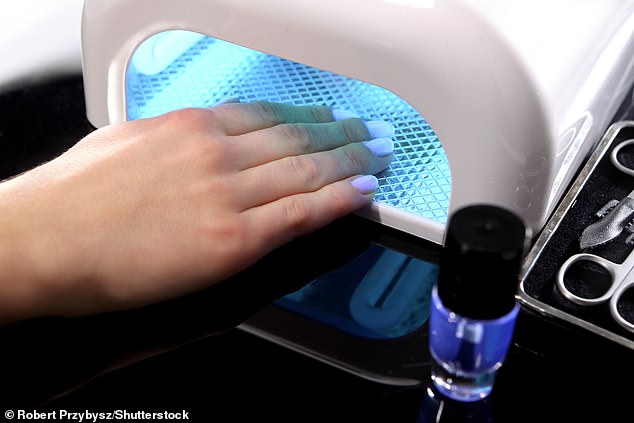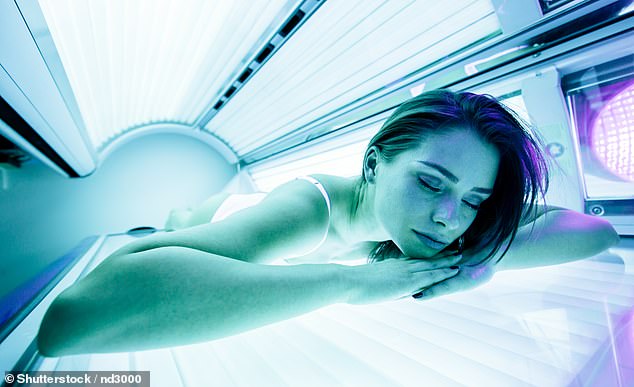UV curing lamps in High Street nail salons could cause skin cancer, scientists warn
>
UV curing lamps in High Street nail salons could cause skin cancer, scientists warn, as studies show they could damage skin in similar ways to tanning beds.
Ultraviolet lamps in High Street nail bars could pose a skin cancer risk, scientists fear.
The lamps, which help harden some types of gel nail polish called shellac, could damage skin in ways similar to tanning beds, say researchers from the University of California San Diego and the University of Pittsburgh.
In a series of laboratory studies, they found that a high proportion of skin cells repeatedly exposed to the light emitted by these lamps died.
The cells that survived showed signs of damage, including DNA, which can increase the risk of skin cancer.
Ultraviolet lamps in High Street nail bars could pose a skin cancer risk, scientists fear
Writing in the journal Nature Communications, the study authors cautioned: “Our experimental results… strongly suggest that the radiation emitted by UV nail polish dryers may cause hand cancer.”
They added: “UV nail polish dryers, similar to tanning beds, may increase the risk of early-onset skin cancer.” However, they cautioned that the study “does not provide direct evidence of an increased risk of cancer in humans.”
They called for a long-term analysis, comparing rates of skin cancer of the hands among those who regularly wear nail bars with rates among those who do not. This would take “at least a decade to complete,” they said.
There has been a growing anxiety about nail bars. ‘UV gloves’ that leave only the fingernails exposed can now be purchased online.

In a series of laboratory studies, they found that a high proportion of skin cells repeatedly exposed to light from these lamps died.
US influencer Kourtney Kardashian, Kim’s older sister, has said she doesn’t use UV dryers because they ‘can age skin with brown spots and wrinkles’.
Last night the nail bar industry scoffed at the new findings.
Doug Schoon of the US Nail Manufacturing Council, a chemist by training, called the study “a biased and unfair attack.”
He said the researchers used a very high-powered ultraviolet lamp and exposed cultured skin cells for too long — 20 minutes a day for three consecutive days.
She added that clients typically hold one hand under a lamp for three minutes during a nail bar session. Most go a couple of times a month.

A dangerous trend has emerged online extolling the use of tanning beds years after they were banned from stores due to links to skin cancer.
‘I can guarantee that the results would be very different if they used three one-minute exposures. It seems their agenda is to make all UV nail lamps look dangerous,” he said.
‘For over 20 years these lamps have been used regularly by millions, so they have a long history of safe use.
‘Most of the scientific evidence shows that UV nail lamps are safe when used correctly.’
One reason UV nail bar lamps are unlikely to carry the same risk as tanning beds is that the light they produce is different.
Tanning beds emit UV with a broader spectrum of wavelengths, comprising longer wavelength UVA (315 to 400 nanometers) and shorter wavelength UVB (280 to 315 nanometers). Nail bar lamps tend to only produce UVA.
UVB is more ‘energetic’ and is the main cause of sunburn, but it does not penetrate below the top of the skin. By contrast, UVA rays are less energetic but penetrate more deeply.
Excessive exposure to both can cause skin damage and skin cancer.
Previous studies have found no link between frequent use of nail bars and skin cancers.
However, none of these were the type of rigorous long-term study (following individuals for many years) advocated by scientists in the latest research.
Its lead author, Ludmil Alex-androv, believes there is cause for concern, adding that prior to his work there was “zero molecular understanding of what these devices were doing to human cells.”
